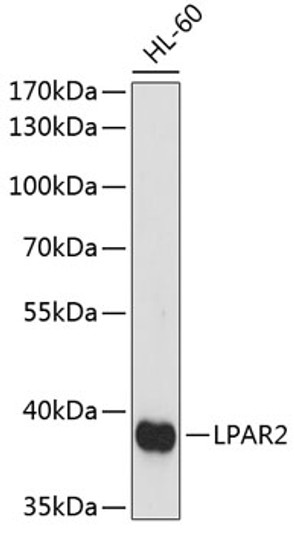| Tissue Specificity | Expressed ubiquitously with the most abundant expression in thymus, testis, small intestine and colon. |
| Post Translational Modifications | Phosphorylated by ATR in a RAD17-dependent manner in response to ultraviolet irradiation and inhibition of DNA replication. Phosphorylated by ATM in response to ionizing irradiation. ATM and ATR can both phosphorylate Ser-317 and Ser-345 and this results in enhanced kinase activity. Phosphorylation at Ser-345 induces a change in the conformation of the protein, activates the kinase activity and is a prerequisite for interaction with FBXO6 and subsequent ubiquitination at Lys-436. Phosphorylation at Ser-345 also increases binding to 14-3-3 proteins and promotes nuclear retention. Conversely, dephosphorylation at Ser-345 by PPM1D may contribute to exit from checkpoint mediated cell cycle arrest. Phosphorylation at Ser-280 by AKT1/PKB, may promote mono and/or diubiquitination. Also phosphorylated at undefined residues during mitotic arrest, resulting in decreased activity. Ubiquitinated. Mono or diubiquitination promotes nuclear exclusion. The activated form (phosphorylated on Ser-345) is polyubiquitinated at Lys-436 by some SCF-type E3 ubiquitin ligase complex containing FBXO6 promoting its degradation. Ubiquitination and degradation are required to terminate the checkpoint and ensure that activated CHEK1 does not accumulate as cells progress through S phase, when replication forks encounter transient impediments during normal DNA replication. 'Lys-63'-mediated ubiquitination by TRAF4 at Lys-132 activates cell cycle arrest and activation of DNA repair. Proteolytically cleaved at the C-terminus by SPRTN during normal DNA replication, thereby promoting CHEK1 removal from chromatin and activating the protein kinase activity. |
| Function | Serine/threonine-protein kinase which is required for checkpoint-mediated cell cycle arrest and activation of DNA repair in response to the presence of DNA damage or unreplicated DNA. May also negatively regulate cell cycle progression during unperturbed cell cycles. This regulation is achieved by a number of mechanisms that together help to preserve the integrity of the genome. Recognizes the substrate consensus sequence R-X-X-S/T. Binds to and phosphorylates CDC25A, CDC25B and CDC25C. Phosphorylation of CDC25A at 'Ser-178' and 'Thr-507' and phosphorylation of CDC25C at 'Ser-216' creates binding sites for 14-3-3 proteins which inhibit CDC25A and CDC25C. Phosphorylation of CDC25A at 'Ser-76', 'Ser-124', 'Ser-178', 'Ser-279' and 'Ser-293' promotes proteolysis of CDC25A. Phosphorylation of CDC25A at 'Ser-76' primes the protein for subsequent phosphorylation at 'Ser-79', 'Ser-82' and 'Ser-88' by NEK11, which is required for polyubiquitination and degradation of CDCD25A. Inhibition of CDC25 leads to increased inhibitory tyrosine phosphorylation of CDK-cyclin complexes and blocks cell cycle progression. Also phosphorylates NEK6. Binds to and phosphorylates RAD51 at 'Thr-309', which promotes the release of RAD51 from BRCA2 and enhances the association of RAD51 with chromatin, thereby promoting DNA repair by homologous recombination. Phosphorylates multiple sites within the C-terminus of TP53, which promotes activation of TP53 by acetylation and promotes cell cycle arrest and suppression of cellular proliferation. Also promotes repair of DNA cross-links through phosphorylation of FANCE. Binds to and phosphorylates TLK1 at 'Ser-743', which prevents the TLK1-dependent phosphorylation of the chromatin assembly factor ASF1A. This may enhance chromatin assembly both in the presence or absence of DNA damage. May also play a role in replication fork maintenance through regulation of PCNA. May regulate the transcription of genes that regulate cell-cycle progression through the phosphorylation of histones. Phosphorylates histone H3.1 (to form H3T11ph), which leads to epigenetic inhibition of a subset of genes. May also phosphorylate RB1 to promote its interaction with the E2F family of transcription factors and subsequent cell cycle arrest. Phosphorylates SPRTN, promoting SPRTN recruitment to chromatin. Reduces replication stress and activates the G2/M checkpoint, by phosphorylating and inactivating PABIR1/FAM122A and promoting the serine/threonine-protein phosphatase 2A-mediated dephosphorylation and stabilization of WEE1 levels and activity. Isoform 2: Endogenous repressor of isoform 1, interacts with, and antagonizes CHK1 to promote the S to G2/M phase transition. |
| Protein Name | Serine/Threonine-Protein Kinase Chk1Chk1 Checkpoint HomologCell Cycle Checkpoint KinaseCheckpoint Kinase-1 |
| Database Links | Reactome: R-HSA-1433557Reactome: R-HSA-176187Reactome: R-HSA-5693607Reactome: R-HSA-5693616Reactome: R-HSA-6796648Reactome: R-HSA-6804756Reactome: R-HSA-69473Reactome: R-HSA-69601Reactome: R-HSA-75035Reactome: R-HSA-8953750 |
| Cellular Localisation | NucleusChromosomeCytoplasmCytoskeletonMicrotubule Organizing CenterCentrosomeNuclear Export Is Mediated At Least In Part By Xpo1/Crm1Also Localizes To The Centrosome Specifically During InterphaseWhere It May Protect Centrosomal Cdc2 Kinase From Inappropriate Activation By Cytoplasmic Cdc25bProteolytic Cleavage At The C-Terminus By Sprtn Promotes Removal From Chromatin |
| Alternative Antibody Names | Anti-Serine/Threonine-Protein Kinase Chk1 antibodyAnti-Chk1 Checkpoint Homolog antibodyAnti-Cell Cycle Checkpoint Kinase antibodyAnti-Checkpoint Kinase-1 antibodyAnti-CHEK1 antibodyAnti-CHK1 antibody |
Information sourced from Uniprot.org









